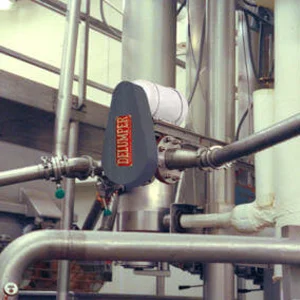Lump breakers are high-end industrial machines designed for processing a variety of solid products including chemicals, minerals, food ingredients, pharmaceuticals, grain, fertilizer, coal, soap and more. These versatile machines, specifically DELUMPER brand lump breakers built by Franklin Miller Inc, use impact, shear, compression, or abrasion to reduce the size of solid materials to a desired particle size range.
Lump breakers are an essential tool for reducing materials for further processing, breaking down agglomerates, eliminating blockages, improving material flow and feeding bulk and powders. These machines can handle a range of materials including hard or soft, dry or wet, friable or sticky and are built for applications requiring precise outputs, resistance to contamination and severe operating conditions. The feed material can be a solid, lump, chunk or agglomerate.
Franklin Miller DELUMPER lump breakers come in different models designed for dry, gravity or wet systems and can be inline, open, stand-alone or conveyor-fed as part of a full system. The Pipeline model DELUMPER enhances liquid flow, protects pumps and expedites dissolving and mixing processes. These units can handle low or high-temperature environments and pressurized or vacuum systems, making them suitable for a wide range of industries and applications. Choose from our line of reliable and high-performing lump breakers for your size reduction need
Discharging powders and bulk solids from a bin or silo can often present a major problem resulting in lost production and high maintenance costs. Caking and even vessel failures can also result from these flow problems. The problem results when powders are conveyed into the vessel in a two-phase form. The material tends to agglomerate or build-up on the vessel walls pack together.

A common solution is the installation of a lump breaker at the discharge. This unit attacks and breaks up the oversized solids that tend to plug the discharge. This works much like a sink disposal keeping the discharge clear of oversized lumps and chunks.
While crushing is governed by basic laws of physics, no single law or rule take the place of experience and testing in the selection and sizing of a suitable crusher for a given application. A number of factors go into the proper selection of a crusher for a given application including the following.